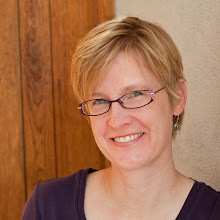How do you reconcile the time it takes to weave a tapestry
with the fast-paced consumer society we now live in? How do you switch between
the slowness of the practice and the rest of your life? (Spoiler: I don't have the answer.)
Tapestry, like any art, takes space to create. I think you
need a certain head space especially for designing. But the weaving can also go
all wrong if you aren’t paying attention. And if you’re worrying about the next
article or class or that you promised Sally Jane you’d help out with the
committee to save the spotted toad but you really couldn’t give a flying fig
about the little critter today, it may not go well with your tapestry.
Actually creating that mental space is the thing. I will
admit that I have not been particularly successful at this in the last year. In
fact, I have been an abysmal failure. I think you have to start with the mental space and then create some kind of practice where you just do it. Every day.
Stop.
Breathe.
Weave.
Stop.
Breathe.
Weave.
I am at Ghost Ranch near Abiquiu, NM this week. I am here to learn
about time. This is a place that I have come back to repeatedly since I was a
little kid. My parents brought us here every summer. I took wonderful classes
once the instructors were persuaded to let a kid in. A couple
summers I worked with Felipe Ortega, the Jicarilla Apache micaceous clay potter.
He was the first person who told me I should be an artist. (He also told me I
shouldn’t go to college and that just wasn’t going to happen in my world… but
eventually I came back to the artist part. He was right about that.)
This retreat center has been run by the Presbyterian Church,
USA for many decades now, but the place has layers of history which include
Georgia O’Keeffe, cattle rustlers, First Peoples, and dinosaurs. When you’re someplace
where you can actually see dinosaurs (coelophysis if you care)… well, that is quite
a marker of how big time is.
I took a hike early this morning up to Chimney Rock. This inscription was at the top.
Our lives are a brief flash of brilliance. Chase your
dreams.
I wrote this for me. But maybe you see yourself here too.
Happy dreaming,
Rebecca
I wrote this for me. But maybe you see yourself here too.
Happy dreaming,
Rebecca
Speaking of time…
This Mirrix Weave-Along warping is taking forever! The warp
went on okay, but there are about a billion heddles. I’m thankful I threw in a
couple extra spools for someone on the trip to who I’m delivering a loom. She
is going to have to order her own. I need them! (Serves me right for warping at
18 epi, 10 inches wide. Should have followed Claudia’s instructions.) If my math is right, I need 270 heddles for this warp.
I tried valiantly to finish putting the heddles on this morning at the campground, but the flies drove me to the library. The campground is a little too close to the horse corral.
I tried valiantly to finish putting the heddles on this morning at the campground, but the flies drove me to the library. The campground is a little too close to the horse corral.














